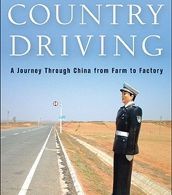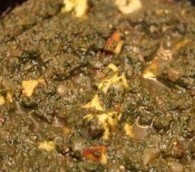Tag: Food
How a Taxi Ride Changed a Writer’s Life
by Jim Benning | 07.21.15 | 11:13 AM ET
Layne Mosler's memoir, "Driving Hungry," chronicles her cab-centric quest for great meals and experiences. Jim Benning asks about it.
Taco Bell’s Big Alaskan Airlift
by Eva Holland | 07.15.12 | 7:00 PM ET
Last month, when I heard that residents of Bethel, Alaska, had been tricked—by a still-anonymous hoax-ster—into believing a Taco Bell franchise was coming to town, I felt a serious twinge of sympathy for my fellow Northerners. Sure, sites like Gawker had a field day with the story (“Parents looked in from bedroom doorways on their sleeping children and smiled,” they wrote at the time. “A silent prayer of thanks that sons and daughters would never know a life devoid of local fast food offerings.”) but it’s easy to snark when you’re sitting in an office in lower Manhattan, with your every heart’s desire just the swish of an iPhone away.
Geographical isolation produces strange cravings, and things that seem pedestrian, elsewhere, take on a bizarre importance. Here in Whitehorse, Canada, we’re counting down to the return of our KFC and Dairy Queen franchises—both closed several years ago—and even the healthiest of health nuts can’t wait for the grand re-openings. It’s about the injection of something new, something—anything—different into a well-worn routine. In that way, I suppose you can compare the arrival of a fast food franchise in a remote small town to the act of travel itself: Good or bad, it always shakes things up.
Anyway, Bethel’s story ends happily. Taco Bell airlifted 10,000 Doritos Locos Tacos into town to soothe the sting of the hoax, and the end result of the whole saga is this promo spot:
What Do Guidebooks Say About America?
by Eva Holland | 06.04.12 | 1:57 PM ET
The Atlantic’s Max Fisher dug through several USA guidebooks to get a sense of what they’re telling the world. The results? He found a heavy emphasis on politics, food and dining customs, and punctuality, punctuality, punctuality.
I especially liked his observations about the complications of U.S. utensil etiquette:
You might say that global food cultures tend to fall into one of two categories: utensil cultures and finger cultures. The U.S., somewhat unusually, has both: the appropriate delivery method can vary between cuisines, and even between dishes, and it’s far from obvious which is which. Baked chicken is a fork food, but fried chicken a finger food, depending on how it’s fried. If you get fried pieces of potato, it’s a finger food, unless the potato retains some circular shape, in which case use your fork. And so on. Confused yet?
Fisher also notes that the books illustrate the expectations and habits of many outsiders as clearly as they do Americans:
In many ways, the tour books say as much about the world as they do about the U.S., by highlighting the ways in which American practices and standards deviate. Anyone who’s traveled widely, particularly in the developing world, will understand why these books are so emphatic about, for example, punctuality, personal space, and the unreliability of our trains.
Indeed. (Via Frank Bures)
Video: Chef David Chang on Thoreau, Creativity and Lucky Peach
by Jim Benning | 03.08.12 | 4:42 PM ET
Really enjoyed this 17-minute conversation with Paul Holdengraber—almost as much as I’ve enjoyed the spicy pork sausage and rice cakes at Chang’s Momofuku Ssam Bar.
The Halibut Taco is Alaska’s Unofficial State Dish. Discuss.
by Eva Holland | 02.28.12 | 7:23 AM ET
I spent nine days traveling in Southeast Alaska last month, and as I went from one panhandle port to the next, and from bar to pub to restaurant, I noticed something: the halibut taco is everywhere. It’s even outstripping such traditional Alaskan standbys as king crab legs, beer-battered halibut fish ‘n’ chips, and seafood chowder. It’s the new normal.
I’m not World Hum’s designated taco expert, by any means—Jim’s the Mexican food addict around here—but I’ve been intrigued by unexpected Mexican-in-the-sub-Arctic offerings before. And I’m no less intrigued by the halibut taco seemingly conquering the last frontier.
Alaska isn’t a state that most people associate with cutting-edge cultural fusion (though if you spend much time there, you’ll see there’s more to the place than the Discovery Channel lets on), and it seems to me that the taco’s dominance there is just one more sign of our ever-shrinking planet. I say, bring on the tasty and fascinating cultural variations.
Food as Instructive Historical Document
by Michael Yessis | 10.14.11 | 11:48 AM ET
Felipe Fernández-Armesto, author of the excellent Pathfinders: A Global History of Exploration, looks at how food illuminates history. From the Asia Literary Review:
When the tides of empire ebb, returnees and counter-colonists travel with them. So Britain has become, in the post-colonial era, a springboard for the worldwide projection of Indian food. The Netherlands has played a similar role for Malay dishes and France for those of the Maghrib and Vietnam. In the same period, globalisation, long-range mass tourism and worldwide migrations have demonstrated that the West is highly receptive to exotic innovation, while beyond the Middle East, the peoples of the eastern and southern extremities of Asia are far harder to wean onto alien cuisines.
McDonald’s and Starbucks buck this trend - though one doubts whether their popularity has much to do with their food. Their customers in India, Japan and China seem rather to be choosing a “lifestyle option”. In the West, by contrast, even the most introspective food cultures - those of France, Spain and Italy - have failed to resist the intrusion of cuisines with which they have few or no imperial links, such as those of Lebanon, Thailand, Japan and Turkey, from where the kebab has become a global rival to the burger and the burrito. Western food has registered no comparable counter-coups - apart, arguably, from the Irish pub, which seems to be a concept with an infinitely elastic range - although I hear there is a Bauernstube in Beijing and one of the best views of Tokyo is to be had from The Peak Lounge at the Park Hyatt Hotel, which bills itself, rather unconvincingly, as an English tea lounge.
Travels Through the Wreckage of Japan’s ‘Triple Disaster’
by Michael Yessis | 09.02.11 | 7:59 AM ET
World Hum contributor Daisann McLane’s Well-Traveled dispatches about her travels to Sendai, Fukushima and Tokyo four months after the 9.0 earthquake, tsunami and nuclear disaster struck Japan has concluded at Slate. It’s an amazing series, powerful and heartbreaking and beautifully written. From the first of three parts, Sendai Rising From the Wreckage:
Even after four months, it’s a mess of Augean proportion: uprooted pine trees, splintered wood beams, crumpled abandoned cars, wooden fishing boats tipped on their side, trying to sail away on a sea of mud. Your first reaction is to throw up your hands in desperation—how on earth do you begin cleaning this up? But the Japanese have passed that shock stage, and have whipped themselves into action: a squadron of earth movers is busy, steadily organizing the endless wreckage into tidy haystack-like hills. “This was the town of Natori.” Akawa-san points over to a spot on the eastern, coastal side of the highway. There’s nothing there but a solitary house without walls, its soggy furnishings and books spilling out the way junk tumbles from an overstuffed closet.
McLane, whose extraordinary writing career has ranged from contributing to Rolling Stone during its heyday to her current spot as the Real Travel columnist for National Geographic Traveler, explained how writing about the triple disaster affected her in an email to friends and colleagues:
The experience overcame me. Those of you who are writers, photographers and editors will understand: Sometimes you find yourself in the middle of an extraordinary story that makes you want to write your heart out. This was one of them.
The ‘I Ate at El Bulli’ Genre of Food Writing
by Jim Benning | 08.01.11 | 11:40 AM ET
Famed Spanish restaurant El Bulli closed Saturday. Among its many legacies, the Telegraph notes, it created a new genre in food writing:
Over the years, however, hundreds of restaurant critics from all over the world made the pilgrimage to northern Spain, establishing a distinct genre of review that has become known in the trade as the “I Ate At El Bulli Piece” (IAAEBP).
A pioneering example appeared in the New York Times Magazine: “Welcoming cocktails of a frozen whisky sour and a foam mojito were accompanied by popcorn that had been powdered and reconstituted as kernels, and a tempura of rose petals. A ‘Kellogg’s paella’ consisted of puffed Rice Krispies to which the waiter added an intense seafood reduction; on the side were a small, flash-fried shrimp, a piece of shrimp sashimi and an ampoule containing a thick brown extract of shrimp heads that you were instructed to squeeze into your mouth.”
Anthony Bourdain’s April blog post about his El Bulli meal would have to stand as a masterful example of an IAAEBP.
Tonight: Bourdain Goes to El Bulli for ‘Greatest Meal’ of His Life
by Jim Benning | 08.01.11 | 11:05 AM ET
The Spanish restaurant many critics considered to be the best in the world served its final meal Saturday night. Travel Channel host Anthony Bourdain visited Ferran Adria’s El Bulli recently, and his show about it airs for the first time tonight.
Bourdain called the meal he had there during that visit “the single greatest restaurant meal of my life.”
I don’t know if Monday’s episode is the best depiction of what the Adrias did at El Bulli-though I’m pretty damn sure it is. I do know that our producers and camera people and editors and post production people went all out-did their very best work. This show was a labor of love and much gratitude. We were determined to get it right.
Pakistanis Don’t Approve of U.S., but They Love its Fast Food
by Michael Yessis | 07.25.11 | 12:11 PM ET
The new Hardee’s in Islamabad is wildly popular. McDonald’s expanded to home-delivery. A sports bar serving chicken wings—though not beer—just opened. Nicolas Brulliard explains what’s going on:
Nowhere is Pakistanis’ love of American fast food more apparent these days than at the newest Hardee’s. A few days after a much-hyped opening attended by U.S. Ambassador Cameron Munter and his wife, lines of customers still extended outside the doors. Nawaz Sadiq, manager for development and training at Hardee’s, said the outlet has served an average of 5,000 to 6,000 customers a day so far.
“The Pakistani market is very much brand-conscious,” Sadiq said. “Pakistani people are against America because of its policies, but at the same time, people want quality.”
Unlike in the United States, fast food here is among the more expensive eating-out options. At 390 Pakistani rupees, or about $4.50, a Big Mac is out of reach for most people. Consequently, many customers are part of Pakistan’s highly educated class and have spent time in the United States, or have at least more favorable opinions of the United States than most of their countrymen.
To China’s Fangji Cat Meatball Restaurant and Beyond
by Michael Yessis | 07.18.11 | 11:18 AM ET
More travel-related hilarity from David Sedaris in China, though it’s not for those without an adventurous palate. And if you do have an adventurous palate, Sedaris salutes you:
Another of the dishes that day consisted of rooster blood. I’d thought it would be liquid, like V8 juice, but when cooked it coagulated into little pads that had the consistency of tofu. “Not bad,” said the girl seated beside me, and I watched as she slid one into her mouth. Jill was American, a Peace Corps volunteer who’d come to Chengdu to teach English. “In Thailand last year? I ate dog face,” she told me.
“Just the face?”
“Well, head and face.” She was in a small village, part of a team returning abducted girls to their parents. To show their gratitude, the locals prepared a feast. Dog was considered good eating. The head was supposedly the best part, and rather than offend her hosts, Jill ate it.
This, for many, is flat-out evil but the rest of the world isn’t like America, where it’s become virtually impossible to throw a dinner party. One person doesn’t eat meat, while another is lactose intolerant, or can’t digest wheat. You have vegetarians who eat fish and others who won’t touch it. Then there are vegans, macrobiotics and a new group, flexitarians, who eat meat if not too many people are watching. Take that into consideration and it’s actually rather refreshing that a 22-year-old from the suburbs of Detroit will pick up her chopsticks and at least try the shar pei.
In Italy, a Toast to American Breakfasts
by Rick Steves | 06.27.11 | 1:17 PM ET
On eating in Europe, and what Europeans have to say about American cooking
The Best Travel Books of 2010
by Frank Bures | 12.09.10 | 12:10 PM ET
Frank Bures surveys the year's most intriguing titles and offers a few gift ideas
New on UNESCO’s Intangible Cultural Heritage List: Acupuncture, Mexican Food and More
by Eva Holland | 11.17.10 | 2:20 PM ET
UNESCO has announced 46 new additions to its catchily-named Representative List of the Intangible Cultural Heritage of Humanity. Among the new items? Chinese acupuncture, Colombian Marimba music, and several different regional carpet-weaving practices from Azerbaijan and Iran.
So far, the inclusion of “the gastronomic meal of the French” seems to be garnering the most media attention, but as devoted fans of Mexican food, we’re thrilled to see that “traditional Mexican cuisine” also made the list. “The Mediterranean diet” was a third foodie addition, credited to Spain, Greece, Italy and Morocco.
Five Ugly Foods You Should Eat
by Jenna Schnuer | 11.08.10 | 1:04 PM ET
Jenna Schnuer unveils not-so-pretty international dishes anybody will love -- except a food stylist
See the full photo slideshow »
The ‘Bill Clinton Ate Here’ Effect
by Michael Yessis | 10.26.10 | 12:01 PM ET
Wherever former President Clinton eats, crowds follow. Writes David Segal: “[F]ew phrases are more bankable to restaurants around the world than this: ‘Bill Clinton ate here.’” Here’s why:
It’s widely (and correctly) assumed that he has good connections everywhere he visits, so he’s unlikely to wind up at a dud. More than most celebrities, he seems like a person who appreciates good food, and before he had heart surgery, he was known for his wide-ranging appetite.
And when Mr. Clinton visits a restaurant, everybody in the room knows it. Douglas Band, an aide who frequently travels with Mr. Clinton, says that his boss introduces himself to every diner, as well as every waiter and every kitchen staff member. He will always pose for photographs and sign guest books. Someone from his staff will send a thank-you note a few days later.
Anyone who trails in Mr. Clinton’s dining path will eat well, but should know that his taste in restaurants, when he actually selects them, runs to the bright, lively and unfussy. The white table cloth, 10-course prix fixe experience is not his style.
I’ve happily followed in Clinton’s dining path, here in D.C. and elsewhere. I regret waiting until my final day in Little Rock, a Sunday, to track down one of his favorite spots. Alas, it was closed.
Around the World in 17 McDonald’s Placemats
by Bob Payne | 10.25.10 | 12:06 PM ET
Call them McCultural Artifacts. Bob Payne has collected McDonald's placemats from more than 50 countries during his travels.
See the full audio slideshow: »
Tourism Promotion Through ... Food Trucks?
by Eva Holland | 10.20.10 | 1:10 PM ET
The Wall Street Journal notes a potential new trend: Foreign tourism boards stirring up interest abroad by offering free food-truck meals to entice potential visitors. Here’s reporter Sumathi Reddy:
Foreign countries are increasingly hoping food is the key to New Yorkers’ hearts—and purse strings. In June, the Bahamas Ministry of Tourism had a Treats & Tweets truck dishing out free Junkanoo drumsticks (chicken wings), Bahamian macaroni and cheese and virgin Bahama Mamas for a week. “It was promoting tourism and travel to the Bahamas using food as a conduit,” said Chelsey Lutz, a spokeswoman for the ministry.
This is one form of promotion I can definitely get behind. (Via @collazoprojects)
How Airplane Background Noise Affects our In-Flight Taste Buds
by Eva Holland | 10.15.10 | 2:42 PM ET
New research suggests that the white noise of airplane cabins could be contributing to the infamous blandness of in-flight meals. Here’s the Independent’s Steve Connor:
White noise consists of random collections of sounds at different frequencies - such as the muffled noise of aircraft engines - and scientists have demonstrated that it is capable of diminishing the taste of salt and sugar.
The findings could explain a phenomenon well known to airline companies: passengers tend to lose their sense of taste when they are in the air.
Interesting stuff—but I’m a little surprised to find researchers putting serious time into studying airplane food, considering the in-flight meal is nearly extinct.
Thoughts From the Amerika Section of a German Grocery Store
by Terry Ward | 10.11.10 | 11:01 AM ET
Amid the Cheese Zip and the Marshmallow Fluff, Terry Ward remembers what it means to be American
- « Prev Page
- Next Page »





